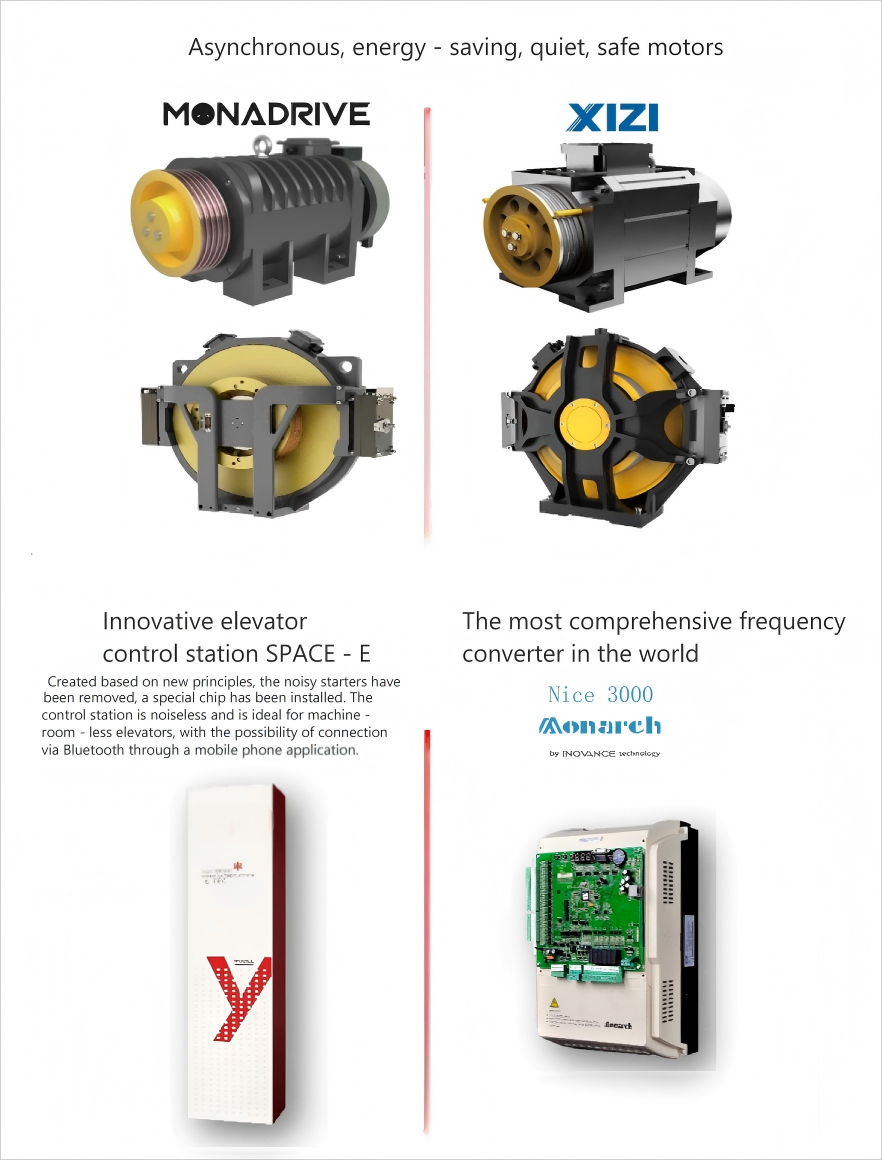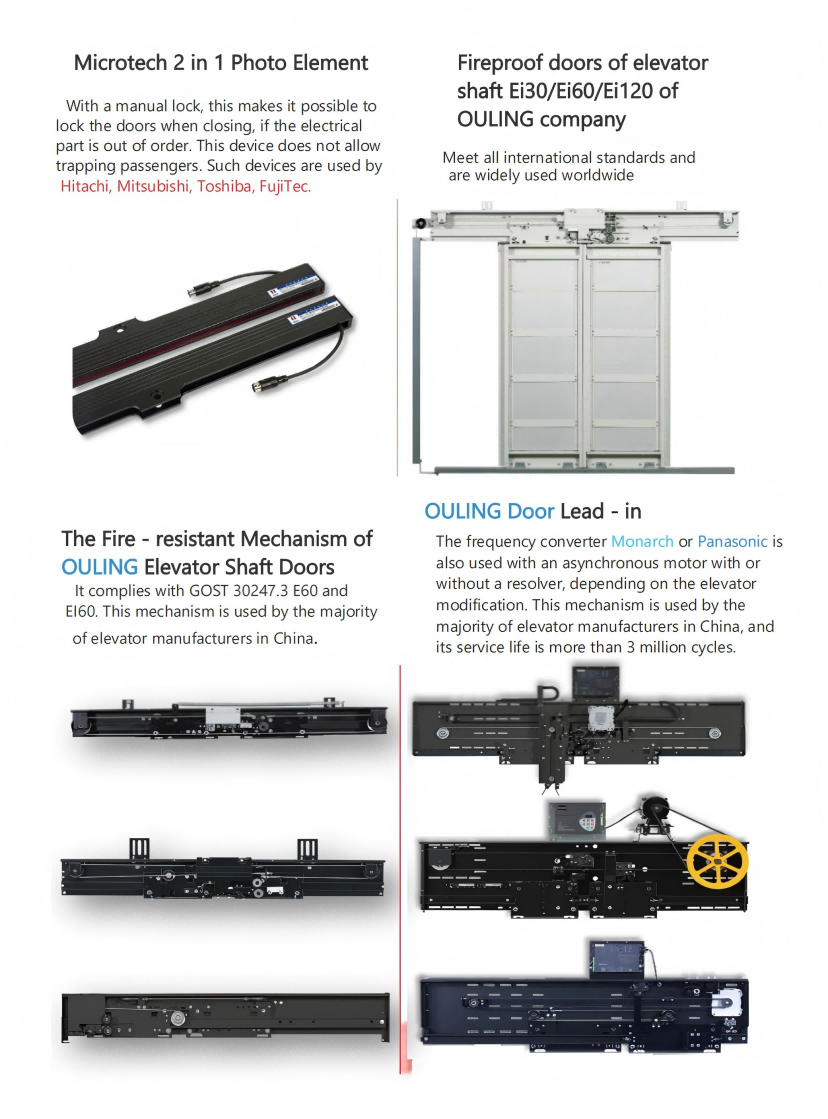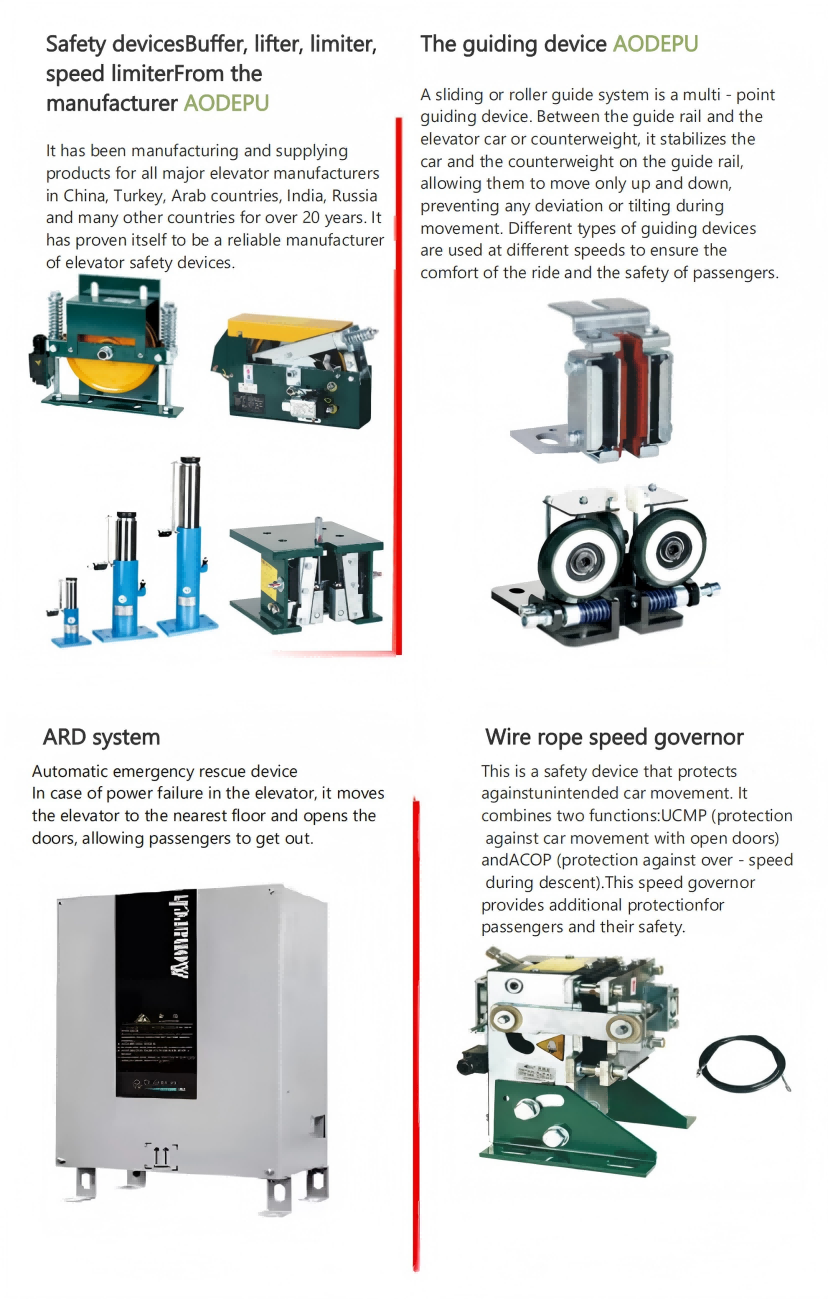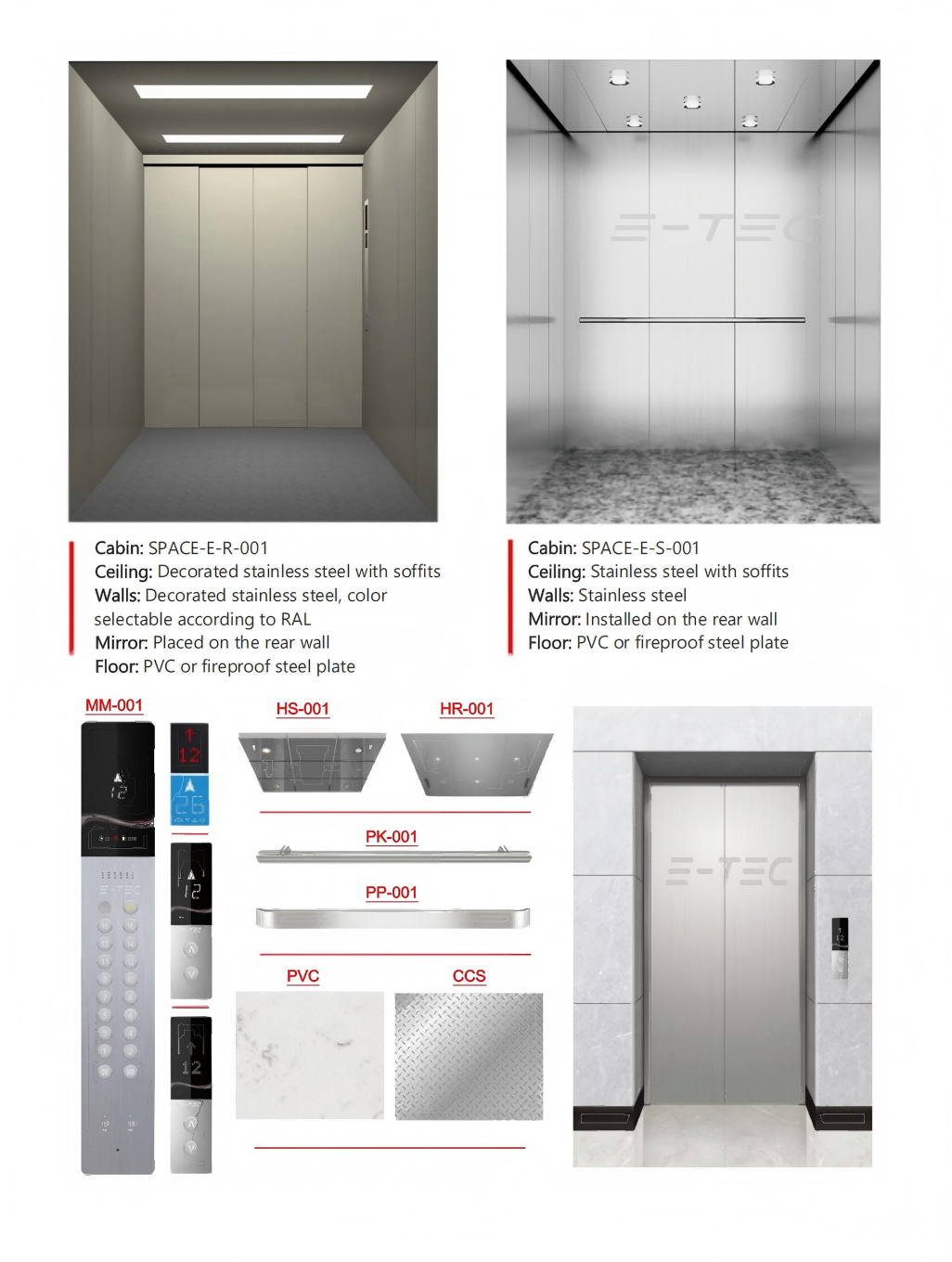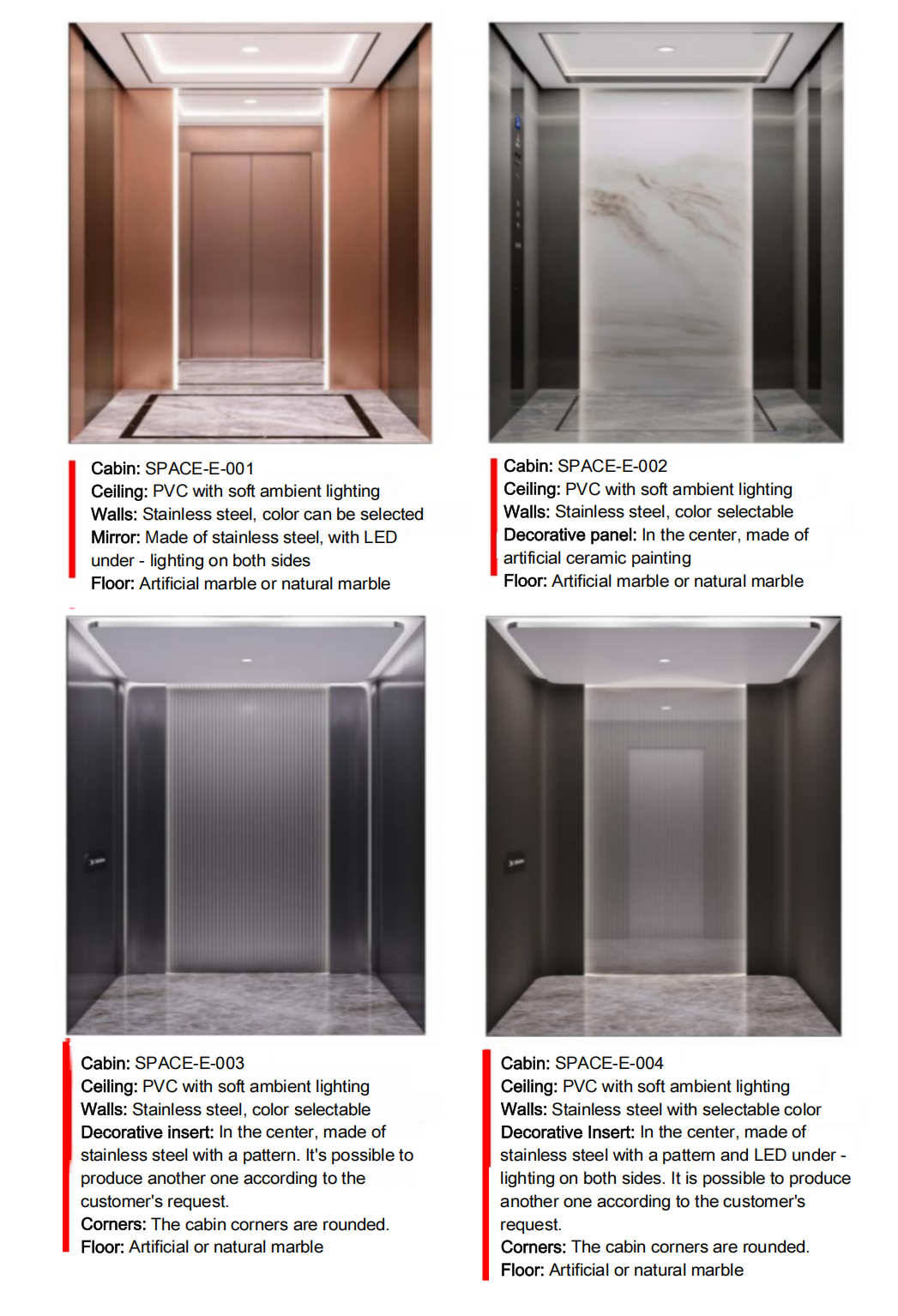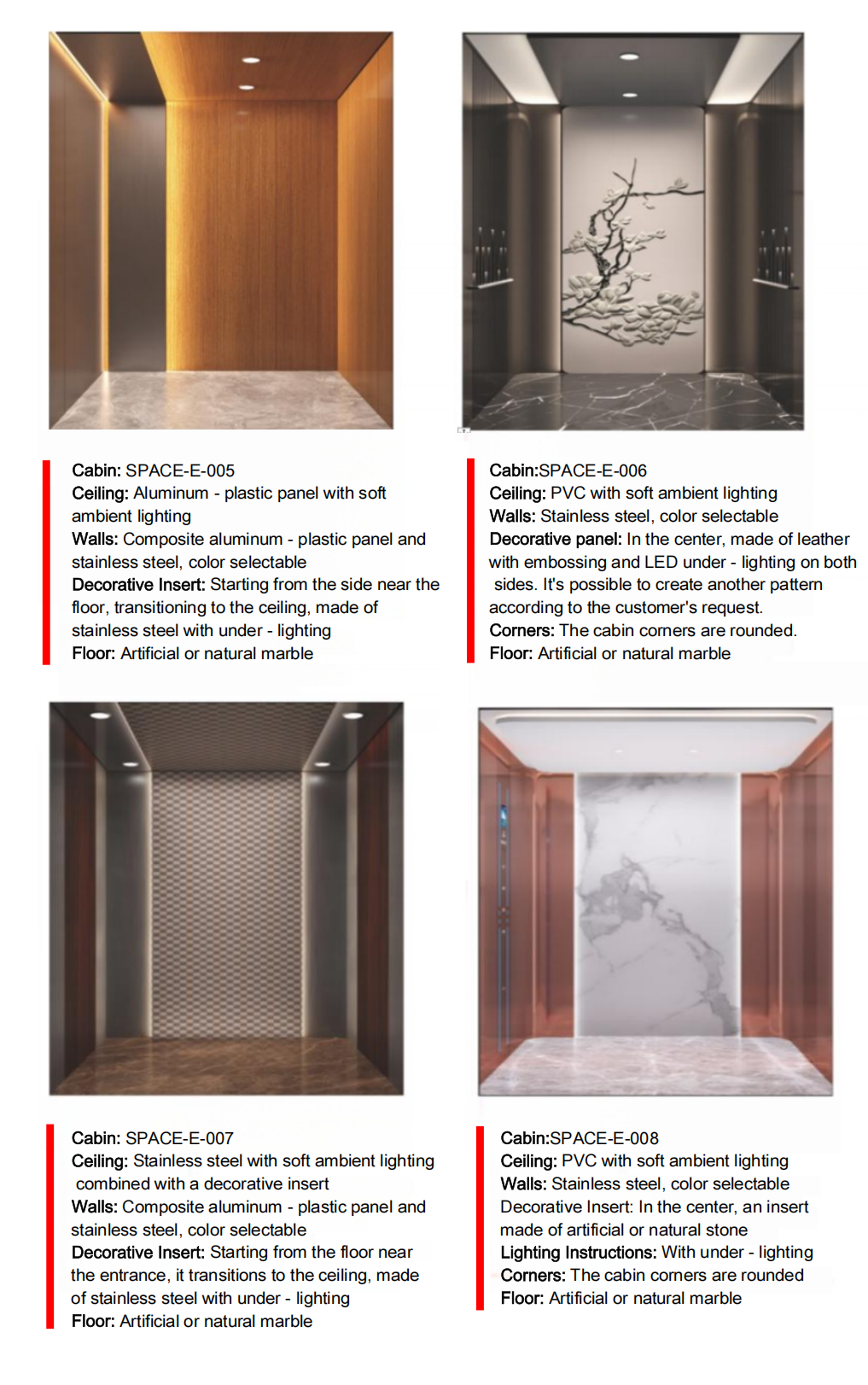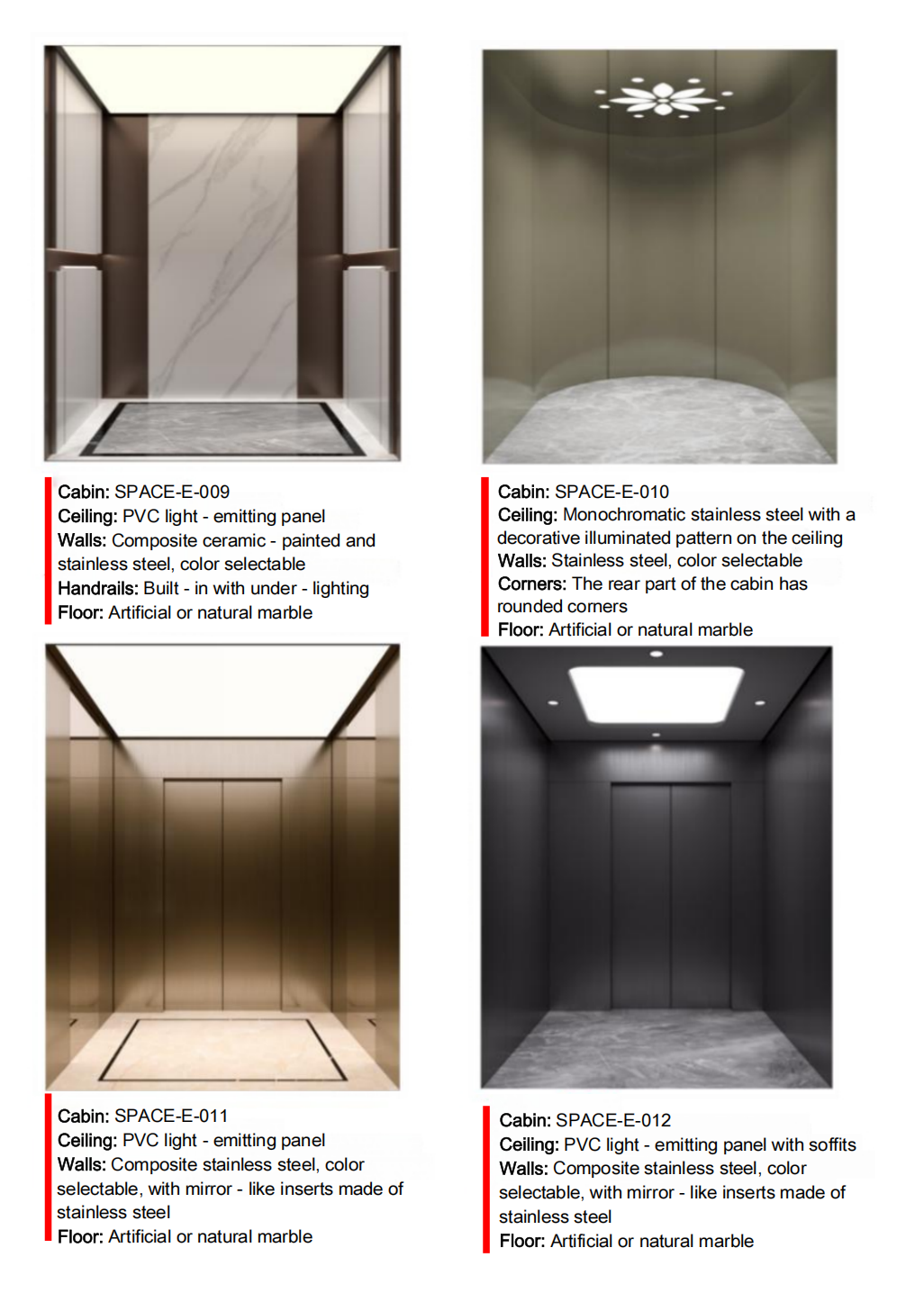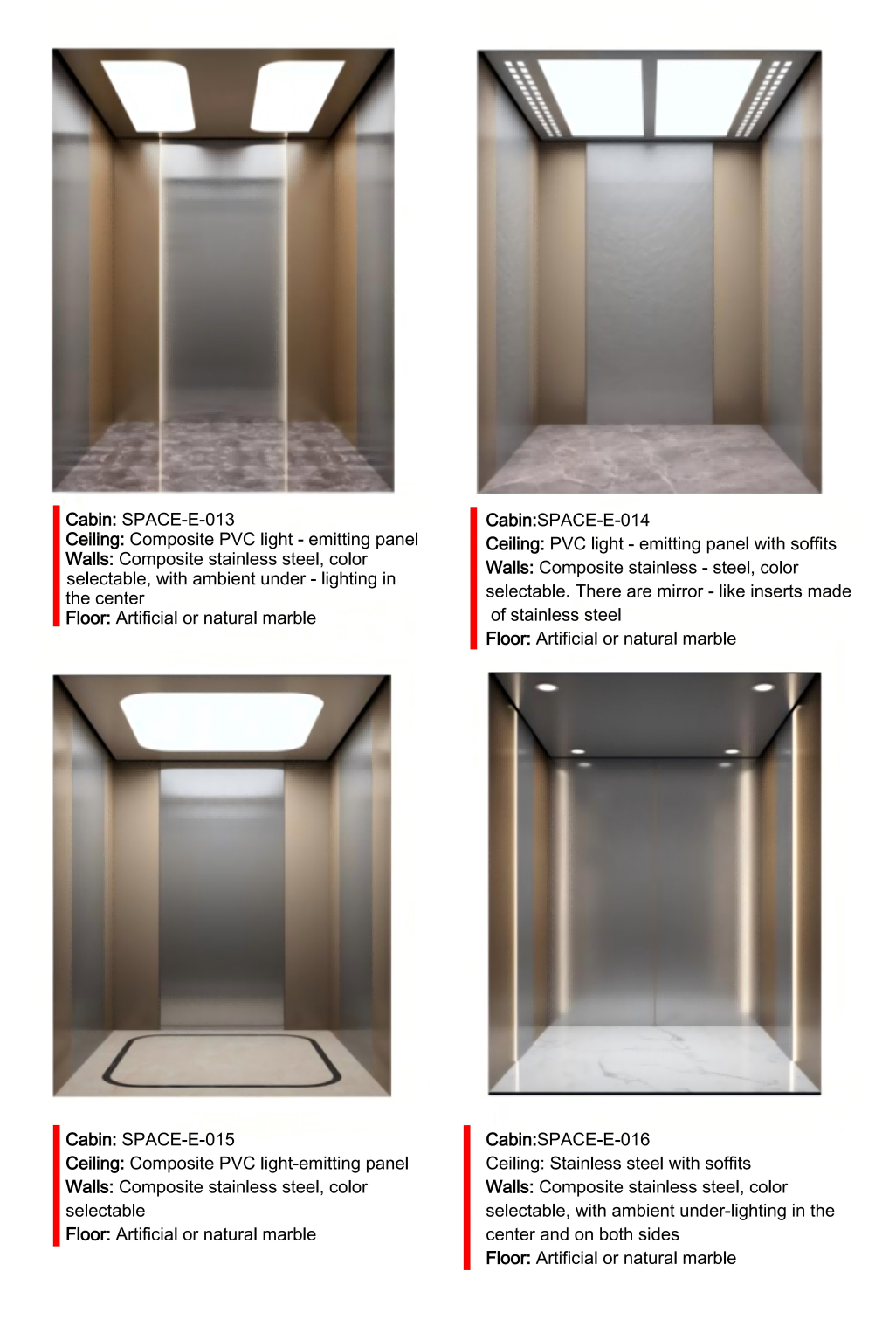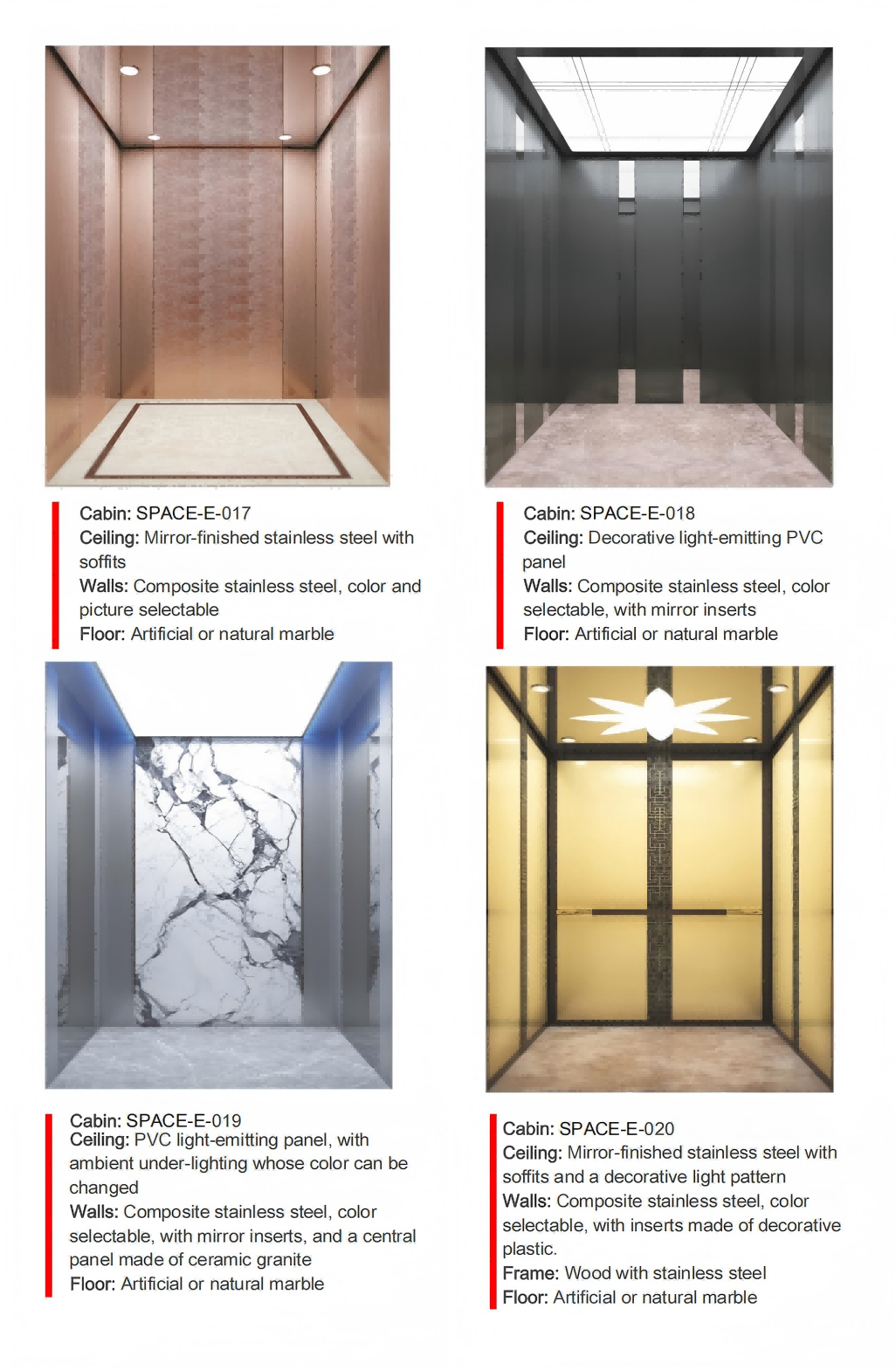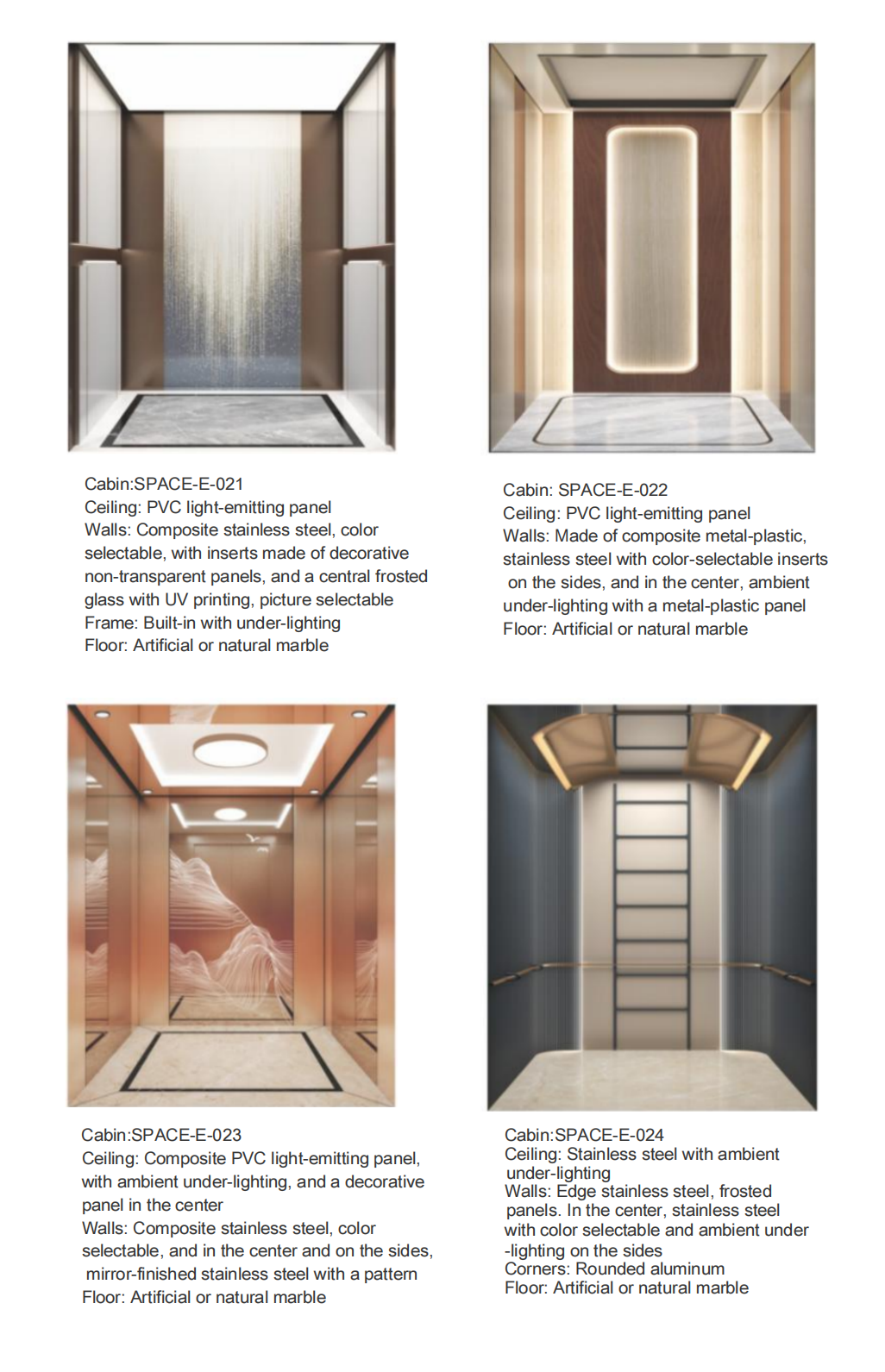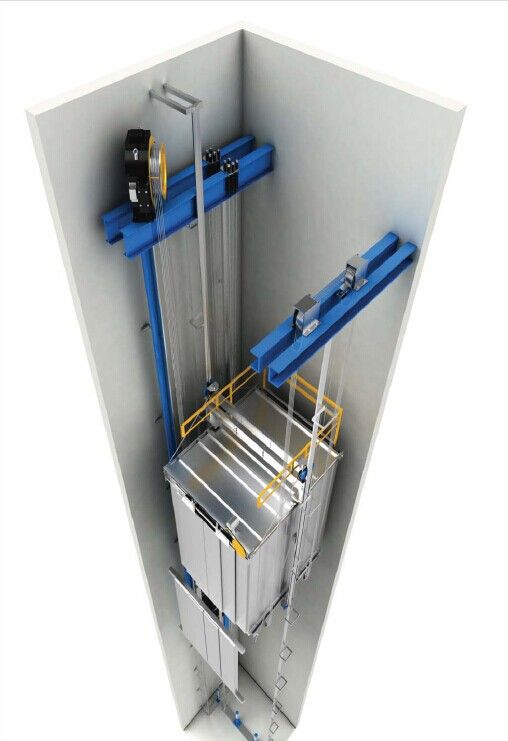
TheFUJI space machine - room - less passenger elevator offers the possibility to reduce construction costs, improves the style of architectural design, and saves space. This enables urban buildings to create efficient and reliable solutions for vertical passenger transportation.
Structural solutions for machine - room - less elevators:
The elevator is installed inside the hoistway, and there is no need to construct an additional machine room above the elevator hoistway.
Machine - room - less elevators can have a rear - or side - mounted counterweight.
The asynchronous gearless motor comes in different configurations and forms.
In the FUJI space machine - room - less elevators, three types of motors are used depending on the dimensions of the elevator hoistway:
Type 1 - "Barrel";
Type 2 - "Washer";
Type 3 - "Disk".
These gearless motors are also installed in three different ways:
via a steel beam, via a bracket relying on the elevator guide rails, and directly on the elevator guide rail.
Applications:
★ Residential complexes - low - rise and high - rise buildings;
★ Administrative buildings - schools, kindergartens, government institutions;
★ Office buildings and business centers;
★ Hotel complexes;
★ Commercial and entertainment complexes;
★ Preventive and medical institutions - polyclinics, hospitals;
★ Industrial complexes.
Control station
Control system | The interior push - button control system allows the cabin to be called to any floor. Commands can be cancelled by pressing the button twice. Group and individual control are included in the basic configuration. |
Door safety device (photo - element with reverse function) | Infrared modules (infrared curtains, photo elements, infrared barriers) with reverse function. When they come into contact with a passenger or an object, they cause the doors to stop and then reopen. The elevator will not move until the door is completely closed. In the event of an electrical component failure in the infrared module, a mechanical manual lock will be activated. |
Automatic lighting and ventilation shut - off | The lighting and the ventilator automatically switch off to save energy if no calls are received within a certain period of time. |
Door interlock | When the door is open, the door drive - installed door interlock is activated, preventing the elevator cabin from moving. During the elevator's operation, it fully locks the door to prevent it from being opened from the outside. |
Automatic floor skipping | In the case where the elevator cabin is 80% loaded, the elevator will automatically ignore all floor calls because the floor call skipping system will be automatically activated. |
Shutdown in case of overload | To protect the elevator from overloading, this device emits an audible signal and the elevator remains stationary as long as the number of passengers exceeds the rated load capacity. Once the excess passengers exit the cabin, the signal stops and the elevator door closes. |
Fire alarm | In case of a fire, the elevator descends to the landing floor, opens its doors, and does not move anywhere else until the fire alarm is deactivated. |
Fire - fighting elevator and mode for transporting fire departments | For the fire elevator, fire-resistant elevator shaft doors with a fire resistance rating of not less than Ei60 are provided. There is a ladder inside the elevator car, and an evacuation hatch from the elevator car with a size of 500*700. The PPP (Firefighters' Phase Operation) mode is available. This elevator modification complies with the standard of "Passenger elevators. Elevators for firefighters". |
Seismic sensor (optional) | In the event of an earthquake, the elevator descends to the landing floor, opens its doors, and remains stationary, ignoring all commands until the earthquake stops and the seismic sensor is no longer active. |
Emergency lighting system | It operates when the power is cut off. |
ARD | The ARD system - Automatic Emergency Rescue Device (optional) - when the power is cut off, the elevator will travel to the nearest floor and open its doors, allowing passengers to exit. |
VM notification system | Voice announcement system and music accompaniment in the elevator car |
Elevator for people with reduced mobility | FUJI space elevators comply with the standard of "Passenger elevators. Technical requirements for accessibility, including accessibility for disabled people and other groups of people with reduced mobility". |
Signaling
Display of elevator cab position inside the cab | Indication of the elevator cab movement or the cab position on the floor, as well as error or emergency notification |
The door closing and opening button | In the standard configuration |
The delay of door opening | It is adjustable. It is possible to adjust it so that the door remains open for up to 1 minute |
Location of the command panel and the location of the buttons | It is provided for teenagers and for groups of people with reduced mobility. |
Floor call panel | Button panels with a matrix screen on each floor indicate the position of the elevator on the floor or its movement, as well as the service mode and the fire mode. |
Drive system/mechanism/control station
Mechanism for cabin movement | Cable mechanism |
Motor | Asynchronous energy-saving motor |
Voltage/current parameters | 380V/220V-50Hz |
Control station | Innovative noiseless elevator control station SPACE fuji Model Y for a machine-room-less elevator. In this control station, a special chip is used, which makes it possible to eliminate the noisy "starters". The SPACE fuji Model Y control station is configured by installing special software on a mobile phone, with the ability to connect to the elevator control station via Bluetooth. |

